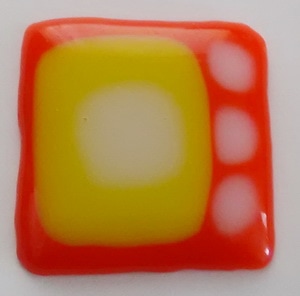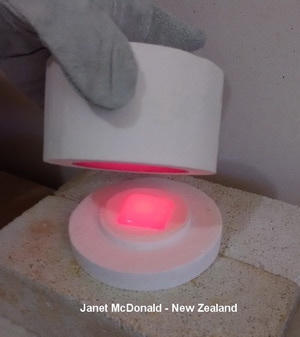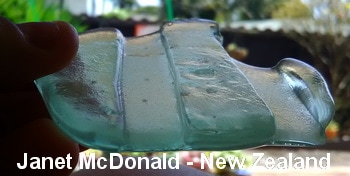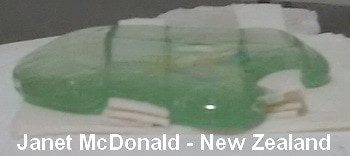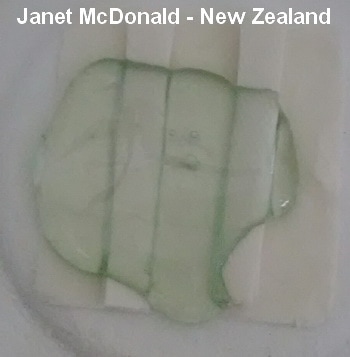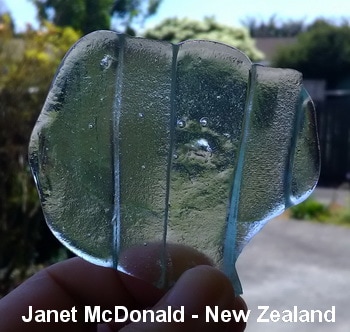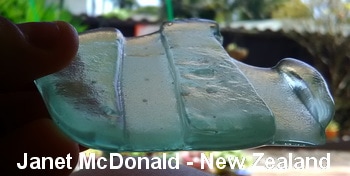Fused Glass
Janet M. McDonald - New Zealand
Janet M. McDonald - New Zealand
Fused Glass is layers of glass are fused together in a kiln to produce pieces of art. I am new (2017)to this form of art and use a microwave kiln to fire my glass. Below you will find some of my pieces and also trials I have done. MWK = Microwave Kiln
|
This small pendant (left) was made using layers of orange, yellow and white glass (COE 90). It was my first go at fusing.
It was fused in a microwave kiln. Yes, in a standard kitchen microwave. The inside wall of the kiln has a special surface that does not let the heat escape and allows glass to melt to a red hot molten level. Pictured right is the kiln just removed from the microwave. |
|
Slumping Experiment
Below are photos step by step how I experimented and used two stacks of kiln paper (1cm wide)to create a slumped pattern in the glass while it was being fired. I used stacked strips but you could cut shapes of hearts or leaves etc. Place your kiln paper design shape in the center of your MWK and place glass layers over your design shape with about a 1cm overhang of glass. For thin kiln paper you will need 5 layers of the Kiln paper. |

